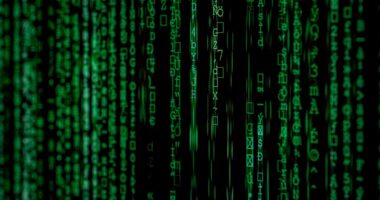Non-fungible tokens (NFTs) are unique digital assets that represent ownership or proof of authenticity of specific items or content, such as artwork, videos, music, or tweets. Unlike fungible cryptocurrencies like Bitcoin or Ethereum, which can be exchanged on a one-to-one basis, NFTs are non-fungible, meaning each one is unique and cannot be directly exchanged for another. NFTs utilize blockchain technology, a decentralized and distributed digital ledger that records transactions across multiple computers.
This technology ensures the uniqueness of each NFT and prevents replication or replacement. When an NFT is purchased, the buyer acquires ownership and rights to the digital asset, with the transaction recorded on the blockchain, providing a transparent and immutable record of ownership. This system allows creators to prove the authenticity and originality of their digital work, while buyers can verify their ownership of the NFT.
NFTs have created new opportunities for creators to monetize their digital work and for collectors to own and trade unique digital assets in a secure and transparent manner.
Key Takeaways
- NFTs are unique digital assets that use blockchain technology to verify ownership and authenticity.
- When choosing a platform for creating NFTs, consider factors such as fees, user interface, and community support.
- When creating and uploading digital artwork for NFTs, ensure that the file meets the platform’s requirements and is of high quality.
- Adding metadata and descriptions to your NFT can help potential buyers understand the story and value behind your artwork.
- Setting up your NFT for sale or auction involves choosing the right pricing strategy and understanding the platform’s selling process.
- Promoting and marketing your NFT can involve leveraging social media, collaborating with influencers, and participating in NFT communities.
- Managing and tracking your NFT sales and ownership can be done through the platform’s dashboard and blockchain explorers.
Choosing the Right Platform for Creating NFTs
Popular NFT Platforms
One of the most well-known platforms is OpenSea, which allows users to create, buy, and sell NFTs across a wide range of categories, including art, domain names, virtual worlds, and more. OpenSea is known for its user-friendly interface and low fees, making it a popular choice for both creators and collectors.
Customizable Options
Another popular platform is Rarible, which offers a more customizable approach to creating and selling NFTs. Rarible allows creators to mint their own tokens with unique features and unlockable content, giving them more control over their NFTs. Additionally, Rarible has its own native token (RARI) that can be used for governance and staking on the platform.
Niche Platforms for Digital Art
Other platforms like Foundation and SuperRare focus specifically on digital art and have curated marketplaces for high-quality, limited-edition artwork. These platforms often have a more selective application process for creators, but they offer a more exclusive and curated experience for collectors.
Choosing the Right Platform
Ultimately, the right platform for creating NFTs depends on the type of content you want to sell, your target audience, and your preferences for fees and customization options. It’s important to research and compare different platforms to find the best fit for your needs as a creator.
Creating and Uploading Your Digital Artwork

Once you’ve chosen a platform for creating NFTs, the next step is to prepare and upload your digital artwork. Whether you’re a visual artist, musician, or content creator, the process of creating and uploading your digital content will vary depending on the platform you choose. For visual artists, this may involve digitizing your artwork using high-quality scans or photographs and preparing it for upload in the required file format (e.g., JPEG, PNG).
For musicians and other creators, this may involve converting your audio or video content into a digital format that is compatible with the platform’s requirements. It’s important to ensure that your digital artwork meets the platform’s guidelines for quality and authenticity. This may include providing proof of ownership or originality for your artwork, such as a certificate of authenticity or documentation of the creation process.
Some platforms also have specific requirements for file size, resolution, and aspect ratio, so it’s important to review these guidelines before uploading your content. Additionally, you may need to create metadata for your artwork, including titles, descriptions, and tags that will help potential buyers discover and understand your NFT. Once your digital artwork is prepared and meets the platform’s requirements, you can proceed with uploading it to create your NFT.
This typically involves connecting your digital wallet to the platform and following the steps to mint your artwork as an NFT. After the minting process is complete, your NFT will be listed on the platform’s marketplace for potential buyers to discover and purchase.
Adding Metadata and Descriptions to Your NFT
Adding metadata and descriptions to your NFT is an essential step in making your digital artwork discoverable and appealing to potential buyers. Metadata includes information about your artwork such as titles, descriptions, tags, and other relevant details that help users understand and find your NFT in the marketplace. When creating metadata for your NFT, it’s important to provide accurate and descriptive information that will attract potential buyers and give them confidence in the authenticity and value of your artwork.
The title of your NFT should be clear and descriptive, giving potential buyers an idea of what they are purchasing. This may include the title of the artwork, the series it belongs to, or any other relevant information that sets it apart from other NFTs. Descriptions are also important for providing additional context or background information about your artwork.
This may include details about the creation process, inspiration behind the artwork, or any unique features or qualities that make it stand out. Tags are another important aspect of metadata that can help users discover your NFT through search filters and categories. Adding relevant tags such as art style, medium, genre, or theme can increase the visibility of your artwork in the marketplace.
Additionally, some platforms allow you to add unlockable content to your NFT, such as high-resolution files, bonus material, or behind-the-scenes footage that adds value for buyers. Overall, adding metadata and descriptions to your NFT is an opportunity to showcase your artwork in the best light and make it more appealing to potential buyers. By providing accurate and detailed information about your artwork, you can increase its discoverability and attract more interest from collectors.
Setting Up Your NFT for Sale or Auction
Once you’ve created and uploaded your NFT with all the necessary metadata and descriptions, it’s time to set it up for sale or auction on the platform’s marketplace. Most NFT platforms offer options for selling your NFT at a fixed price or through an auction format, each with its own benefits and considerations. Setting up your NFT for sale involves determining the pricing strategy, setting a duration for the sale or auction, and considering any additional terms or conditions for potential buyers.
Selling your NFT at a fixed price can provide a sense of certainty for both you as the creator and potential buyers. This approach allows you to set a specific price for your artwork based on its perceived value and market demand. Fixed-price sales can be appealing for collectors who are willing to pay a set amount for a unique piece of digital art without having to compete in an auction setting.
On the other hand, setting up an auction for your NFT can create excitement and competition among potential buyers, potentially leading to higher sale prices. Auctions allow buyers to place bids on your artwork over a specified period of time, with the highest bidder winning the NFT at the end of the auction. This format can generate interest from collectors who are eager to acquire rare or highly sought-after digital art pieces.
When setting up your NFT for sale or auction, it’s important to consider factors such as pricing strategy, duration of the sale or auction, reserve prices (if applicable), and any additional terms or conditions you want to include. By carefully planning and setting up your NFT for sale or auction, you can maximize its visibility and appeal to potential buyers.
Promoting and Marketing Your NFT

Promoting and marketing your NFT is essential for reaching a wider audience of potential buyers and increasing the visibility of your digital artwork in the marketplace. While some platforms have built-in features for promoting NFTs through featured listings or collections, there are several additional strategies you can use to market your NFT effectively. One effective strategy is leveraging social media platforms to showcase your digital artwork and engage with potential buyers.
Sharing high-quality images or videos of your NFT on platforms like Twitter, Instagram, or TikTok can help generate interest and attract new collectors. You can also use social media to provide behind-the-scenes insights into your creative process or share updates about upcoming releases or events related to your NFT. Collaborating with other artists or creators in the NFT space can also help expand your reach and introduce your artwork to new audiences.
By participating in joint promotions or collaborations with other creators, you can tap into their fan base and gain exposure to potential buyers who share similar interests in digital art. Additionally, participating in virtual events or online communities dedicated to NFTs can provide opportunities to network with collectors, curators, and enthusiasts who are actively engaged in the digital art space. By participating in discussions, sharing insights about your creative process, or offering exclusive previews of upcoming releases, you can build relationships with potential buyers and establish yourself as a reputable creator in the NFT community.
Overall, promoting and marketing your NFT requires a proactive approach that leverages various channels and strategies to reach potential buyers. By engaging with social media platforms, collaborating with other creators, and participating in relevant communities, you can increase the visibility of your digital artwork and attract more interest from collectors.
Managing and Tracking Your NFT Sales and Ownership
Once your NFT is listed for sale or auction on a platform’s marketplace, it’s important to manage and track its sales and ownership to ensure a smooth transaction process for both you as the creator and potential buyers. Most NFT platforms provide tools for managing sales activity, tracking ownership transfers, and monitoring performance metrics related to your digital artwork. Managing your NFT sales involves keeping track of inquiries from potential buyers, responding to questions about your artwork, negotiating offers (if applicable), and finalizing transactions with successful buyers.
This may involve coordinating with the platform’s support team to address any technical issues or providing assistance to buyers who encounter challenges during the purchasing process. Tracking ownership transfers is also crucial for maintaining transparency and ensuring that ownership rights are accurately transferred to buyers upon completing a purchase. Blockchain technology enables transparent tracking of ownership transfers through immutable records on the blockchain ledger.
This means that each time an NFT is bought or sold, the transaction is recorded on the blockchain, providing a clear record of ownership history that can be verified by anyone. Monitoring performance metrics related to your NFT can provide valuable insights into its market demand and sales activity. This may include tracking views, likes, bids (for auctions), sales volume, or other relevant data points that indicate interest from potential buyers.
By analyzing these metrics over time, you can gain a better understanding of how well your digital artwork is performing in the marketplace and make informed decisions about pricing strategies or promotional efforts. In conclusion, managing and tracking your NFT sales and ownership requires proactive engagement with potential buyers, leveraging blockchain technology for transparent ownership tracking, and monitoring performance metrics related to your digital artwork. By staying actively involved in managing sales activity, ensuring transparent ownership transfers through blockchain records, and analyzing performance metrics over time, you can optimize the success of your NFT in the marketplace.
If you’re interested in learning more about the world of NFTs, you might want to check out this article on NFT-Jobs that discusses the potential impact of NFTs on the job market. It provides valuable insights into how NFTs are creating new opportunities for artists, creators, and professionals in various industries. This article can complement the step-by-step guide for beginners in understanding the broader implications of NFTs in the digital economy.
FAQs
What is an NFT?
An NFT, or non-fungible token, is a digital asset that represents ownership or proof of authenticity of a unique item or piece of content, such as artwork, music, videos, or collectibles, using blockchain technology.
How do NFTs work?
NFTs work by using blockchain technology to create a digital certificate of ownership for a specific item or piece of content. This certificate is unique and cannot be replicated, making the item or content it represents one-of-a-kind.
What can be turned into an NFT?
Almost any digital content can be turned into an NFT, including artwork, music, videos, virtual real estate, virtual goods in video games, and more.
How do you make an NFT?
To make an NFT, you need to choose a blockchain platform that supports NFTs, such as Ethereum or Binance Smart Chain, create a digital wallet, mint your NFT using a marketplace or platform, and then list it for sale.
What are the steps to make an NFT?
The steps to make an NFT include choosing a blockchain platform, setting up a digital wallet, creating or obtaining the digital content you want to turn into an NFT, minting the NFT using a marketplace or platform, and listing it for sale.
How do you sell an NFT?
To sell an NFT, you can list it on an NFT marketplace or platform, set a price for it, and wait for a buyer to purchase it using cryptocurrency.
What are some popular NFT marketplaces?
Popular NFT marketplaces include OpenSea, Rarible, Foundation, and NBA Top Shot, among others.
What are the costs associated with making an NFT?
The costs associated with making an NFT include gas fees for minting the NFT on the blockchain, platform or marketplace fees, and any additional costs for promoting or marketing the NFT.





